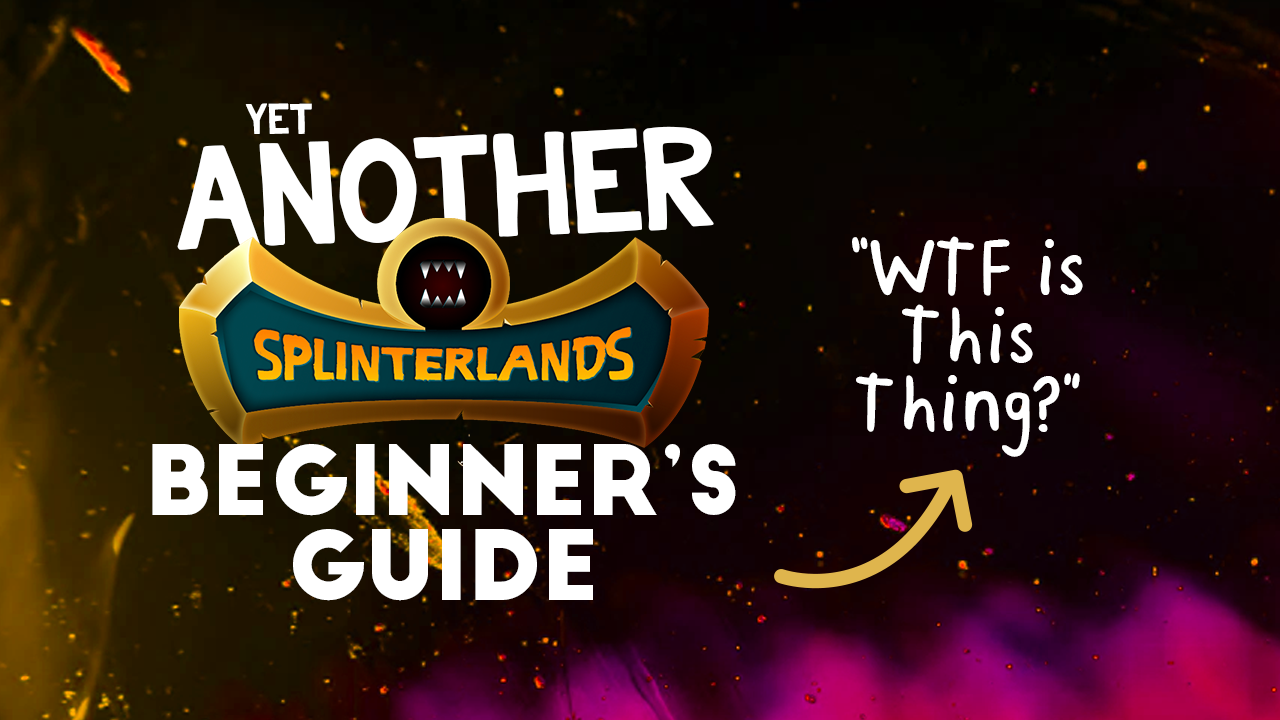
So you've stumbled on Splinterlands.
Maybe you're a gamer who is exploring the world of cryptocurrency, or a cryptocurrency guru who's just discovered NFT gaming. Either way, Splinterlands - a unique confluence of traditional card collecting games and the world of crypto currency - has a lot of complexity and is also a lot of fun.
The game has exploded in the last few months, which means there's more new players than ever. So here's yet another guide to unravelling the mysteries of Splinterlands... starting with the most obvious question:
So... WTF is this thing?
At it's simplest, Splinterlands is a play-to-earn trading card based game integrated with the Hive Blockchain.
Cards (which are either monsters or summoners) are divided amongst seven different splinters (Earth, Fire, Death, Dragon, Life, Water and Neutral) and have various stats attached to them including health, attack type (melee, magic, or ranged), speed, armor and mana cost. Some cards also have special abilities. In addition, cards also have different levels and rarities that have an impact on their overall stats and value. Cards can be combined to level them up; growing stronger, gaining new abilities and increasing their value.

Cards can be bought, sold, earned through quests or rented individually. Packs of cards are also available, though right now they are only available on secondary markets, having sold out from Splinterlands direct.
Because this is a blockchain intergrated game, when new cards and packs of cards are released, there's set numbers of each, determined and fixed at the time of creation in the same way new crypto coin is.
So... how do I play the game?
The basic gameplay is composed of battles where you pit your cards against your opponents' with predefined rules that specify available mana and, at higher levels, other constraints. The battle plays out according to rules of play order and the player who destroys the others' cards first, wins.
Wins advance you through the various brackets, but access to higher brackets is also controlled today by how much total power you have... AKA the combined "burn value" of cards that you own or are currently renting.
When you sign up, you are given the same set of starting cards as everyone else. These cards aren't technically owned by you, cannot be leveled and have no burn value. To advance into higher brackets, you need to buy a Spellbook for $10 and start collecting cards through quests, purchases from the market, or by renting them.
How do I make money?
Dark Energy Crystals (aka DEC) are the in-game currency of Splinterlands and there's lots of different ways to earn more, starting with simply fighting battles. For every battle you win, you earn small amounts of DEC. There are also daily quests that grant chests as rewards. These chests can include DEC, potions, or cards. Each season, which typically lasts fourteen days, also grants a number of reward chests based on your ranking at the end of that season. And finally, you can participate in tournaments which have prize pools for winners.
Beyond those basics, you can also sell cards for profit, or rent them out for x/DEC per day.
What's next?
We'll deep dive into more aspects of Splinterlands for beginners. Got a request for something you'd like to know more about? Share it below!
Cool article. Can't wait to read your next one.
Hello @finitejest! This is @indayclara from @ocd (Original Content Decentralized) team. We saw that you already posted your first post here in Hive! Congratulations and welcome!
Great to hear you are enjoying Splinterlands. Its best you subscribe to Splinterlands Community and share your blogs there. You can also check out Splinterlands Player's Guide: All You Need to Know.
It would be awesome as well if you do an introduction post. Information like who are you and where you're from, how did you discover Hive or who invited you, what types of content you want to see here and the types that you want produce, and what are your expectations in this platform. There's no pressure on this. You can choose on whatever information you would like to share. As a sample of what an intro post is, you can refer to this intro posts for reference Keeping Up With the Buzz - My Introduction to the Hive Community
It's also best to subscribe to other Communities you like and share your blogs there to have a wider range of audience. Or you can check out the Communities Incubation Program.
If you are looking for tips and information as a Hive newbie, click here: Newbie guide. If you have questions, you can hop into Discord server and we'll gladly answer your questions.